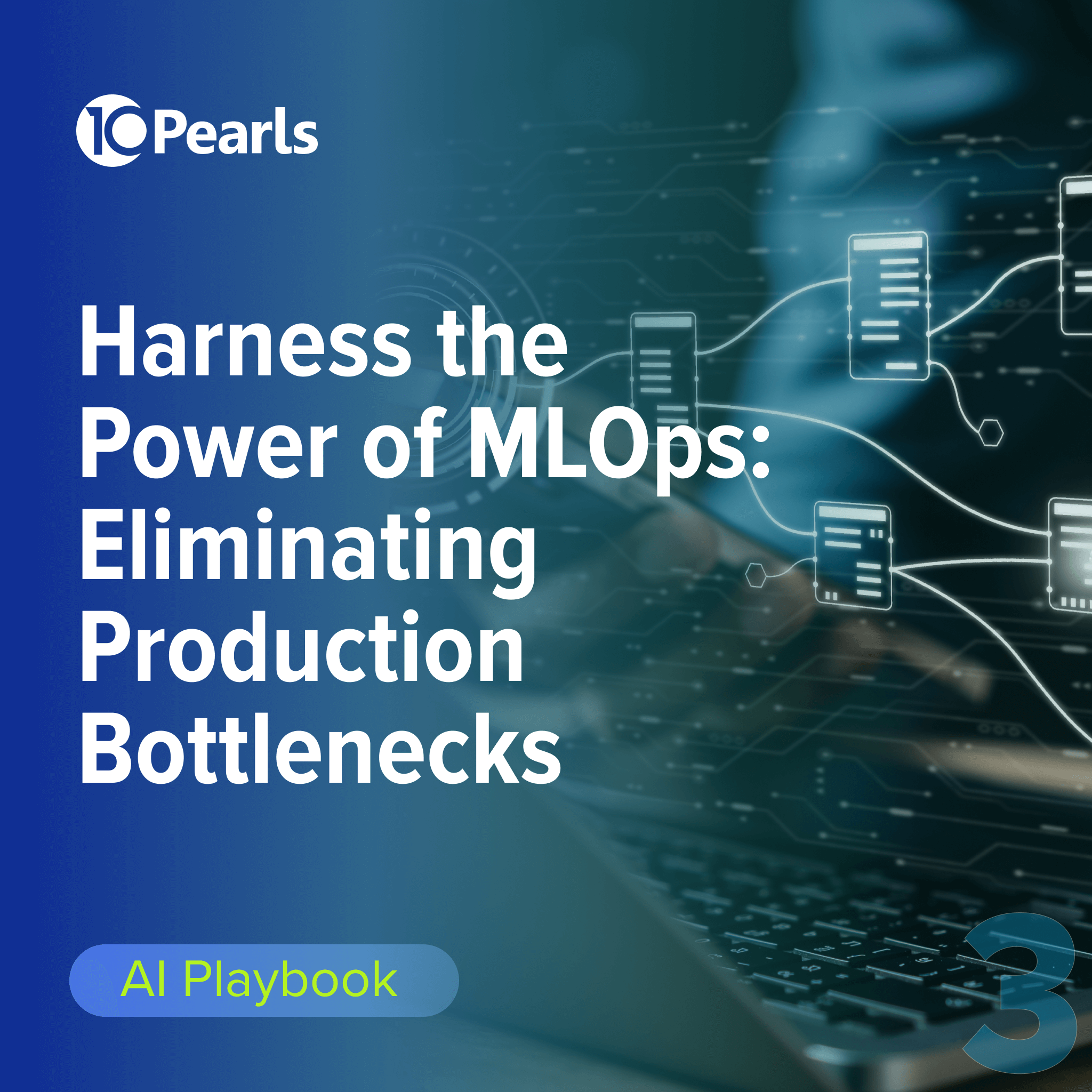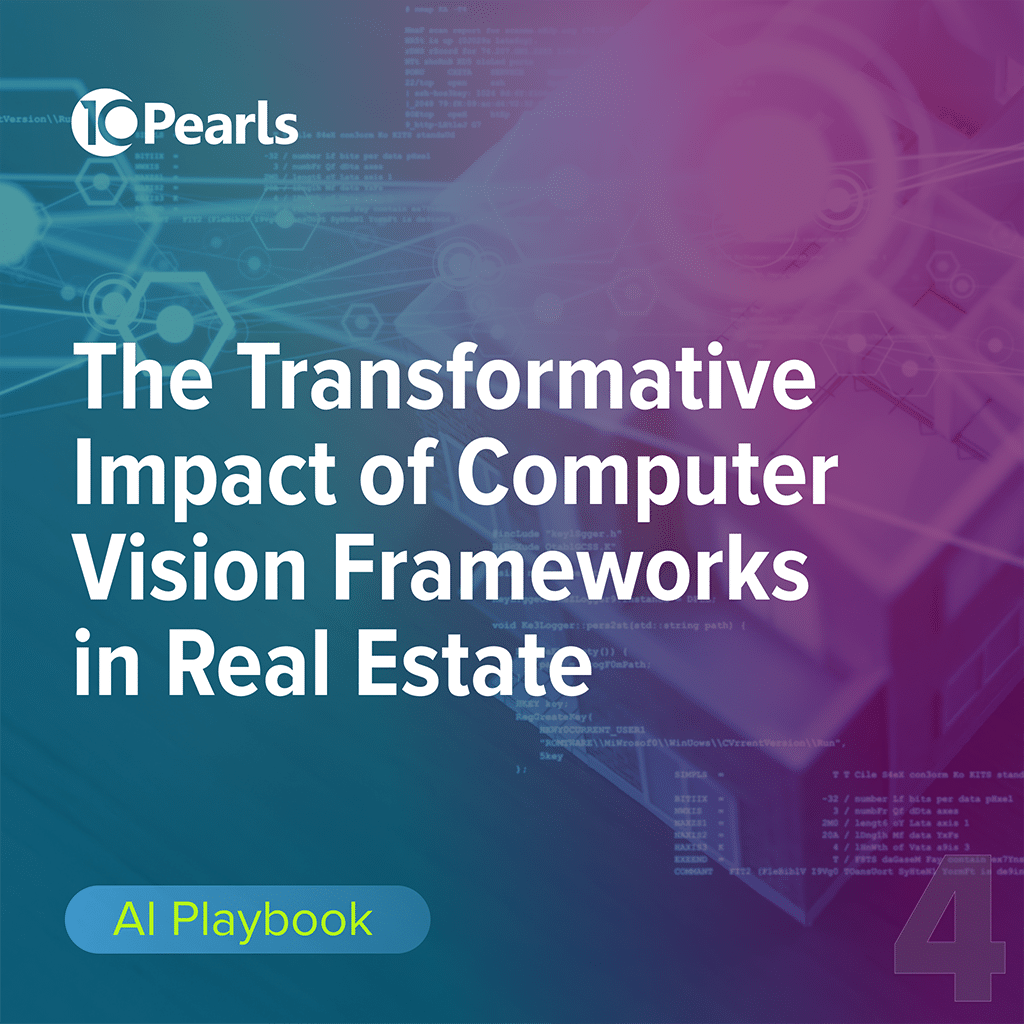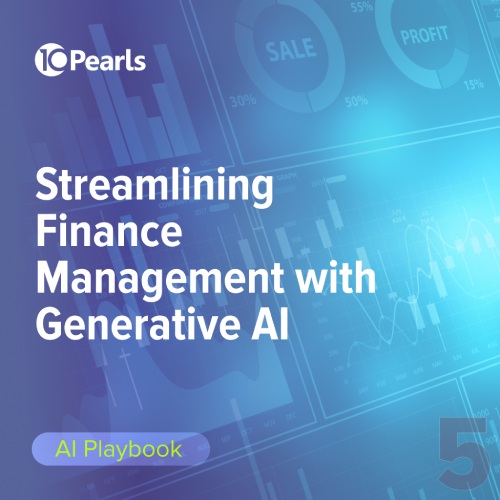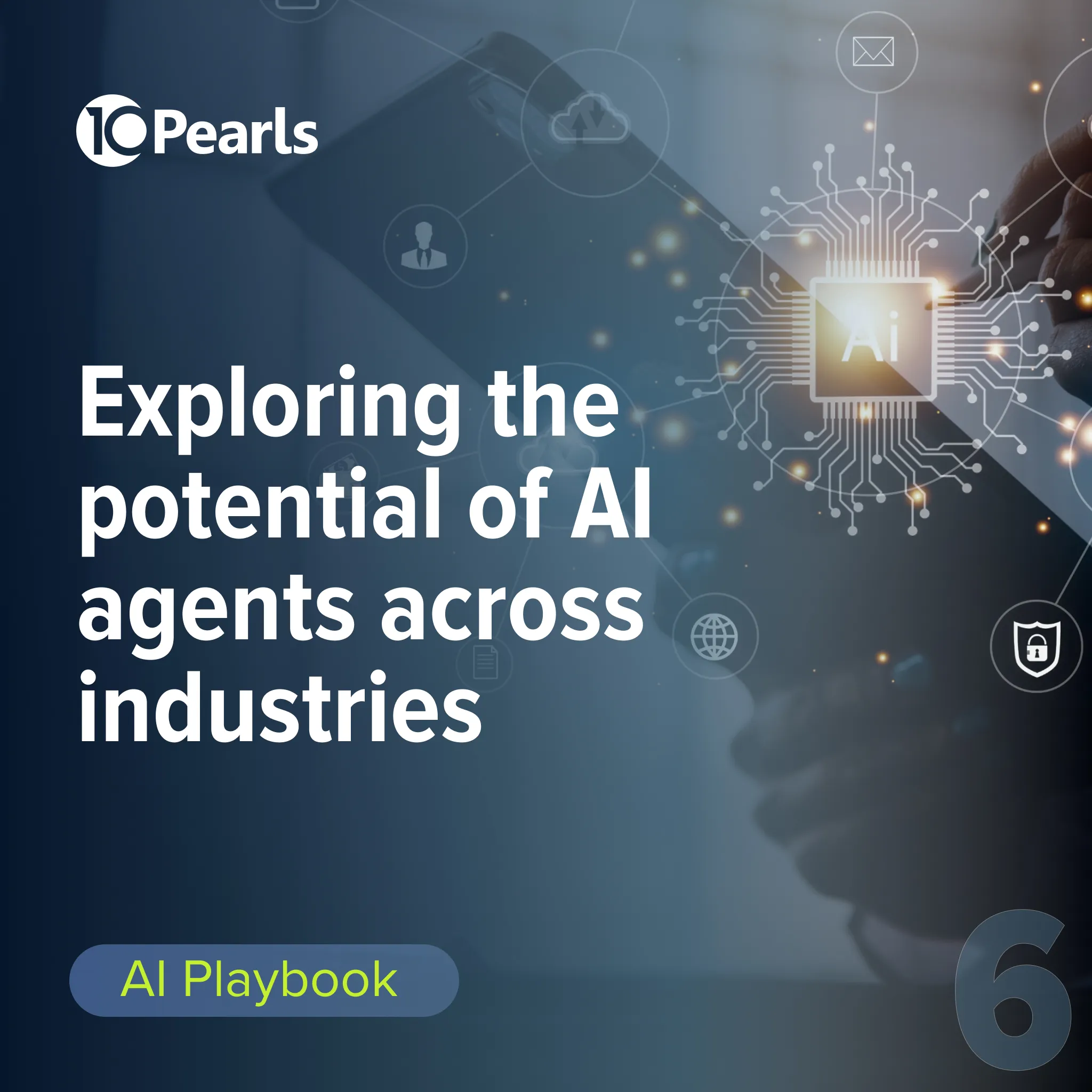AI-Augmented Software Development:
The Shift from Builder to Orchestrator
By 10Pearls editorial team
A global team of technologists, strategists, and creatives dedicated to delivering the forefront of innovation. Stay informed with our latest updates and trends in artificial intelligence, advanced technology, healthcare, fintech, and beyond. Discover insightful perspectives that shape the future of industries worldwide.
A single musician, no matter how good they are, cannot create a symphony. That requires an orchestra and a conductor. This was, up until quite recently, the case for most individual software developers as well. A single developer could only do so much, but AI has changed that. Now, developers who effectively embrace the role of an orchestrator – harnessing the full breadth of AI development capabilities and allowing them to focus more on “what to build” – will be the ones ahead of the curve.
The optimal approach to leverage AI in software development is moving past a prompt-engineered productivity boost towards context-engineered, AI-first development practices. It’s the next step in the evolution of AI-augmented software development, and critical for productivity, efficiency and business growth.
84% of developers use AI in the development process, and 51% developers use AI tools daily.
This blog will explore the evolving role of AI in software development as well as associated challenges and benefits, and how software development practices and delivery models are adapting to keep pace.

Blog contents
- The Bottleneck Has moved
- Bottleneck shifting from development to the business side
- How should businesses adapt?
- Context Engineering: Evolution of AI in Software Development
- Prompt vs context engineering
- A significant step towards AI-Augmented project management
- The Adaptability Advantage: Building Teams for AI Velocity
- Cognitive flexibility
- Rapid experimentation
- AI-amplified experts
- Hybrid competencies
- Broad upskilling
- The New Delivery Model: Specialized Teams with AI Leverage
- An orchestration-focused team structure
- Why clients prefer AI-enabled agile pods over traditional staffing pyramids
- AI-Augmented to AI-Native Software Delivery
- Partner with 10Pearls for AI-Augmented Software Development
The Bottleneck Has Moved
Software development has faced different bottlenecks over the years. Before LLMs and AI coding assistants, it was a lack of talent with relevant expertise. Not enough people knew “how to code” while businesses had heavy backlogs of software that they needed to build.
With LLMs and AI coding assistants, productivity significantly increased, albeit with a learning curve. AI-augmented development had a different bottleneck – developers who needed to learn how best to prompt LLMs to get the desired results. Prompt engineering practices matured and led to substantial improvements in the productivity of both individual developers and teams.
Now, as context engineering emerges as an even more powerful development accelerant, the primary bottleneck is once again shifting.
Bottleneck shifting from development to the business side
As the software development and technical implementation burden is being eased thanks to advances in AI-assisted coding, deciding what to build is emerging the new bottleneck, according to Andrew Ng, an undisputed leader in AI and ML, who has made many accurate predictions about AI’s evolution. One of Andrew’s own teams asked for a PM-to-developer ratio of one-to-two, where it used to be one-to-four. Businesses are, or at least should be, waking up to this shifting reality and revising their approach to development accordingly.
It’s worth noting that the one-to-two PM-to-developer ratio is not necessarily a standard to pursue, but rather a sign of shifting trends. Not all developers have the same productivity, even with AI assistance. Lean business requirements and complex technical executions may still warrant more developers than PMs. While the bottleneck is shifting, it’s not shifting at the same pace across the software development industry.
How should businesses adapt?
Businesses with in-house development teams should focus on restructuring, skill-building, delegating PM responsibilities to developers when feasible, and investing in strong discovery pipelines. This will allow them to widen the bottleneck and experiment, design, and deliver faster than their counterparts who haven’t yet recognized or accounted for this bottleneck. Development companies should shuffle and expand their offerings to highlight research and other product management services.
Relevant changes in the following areas can make adapting to the new bottleneck easier:
- Hiring: Hiring more PMs may seem like the obvious choice, but it’s not practical. Instead, developers with the right breadth of expertise and a healthy understanding of business-technology alignment can be a good starting point.
- Training: Training developers in product management tasks and PMs in AI tools that can help them keep pace with accelerated development can help clear this bottleneck by upskilling both PMs and developers one another’s tasks.
- Team structure: Based on how wide the gap is between PM and development backlog, teams can be restructured to include more PMs and more business-aligned developers than pure developers. Temporary roles, including domain experts and people from specific departments, can be directly embedded in development teams to offload some of the PM’s responsibilities while they ensure high-level alignment.
- Product management: Diffusing PM duties across developers is also a practical way to handle this bottleneck. Carefully deconstructing the PM’s role to retain more business-facing and strategic elements with them while assigning more tech-oriented or neutral elements to developers can lead to better distribution of duties.
Context Engineering: Evolution of AI in Software Development
Context engineering goes beyond prompt engineering, advancing from prompts to systems. In prompt engineering, instructions and requests, constraints, additional or external information, and examples are all part of the prompt window. Context engineering expands your control over these elements beyond the prompt window and grounds an LLM’s thought process in a carefully created body of knowledge (proprietary, current, and relevant) that expands upon the knowledge base the LLM inherently possesses, supplements its input, and filters the output.
Other controls like memory, context distillation, schemas, and meta details also sit in the middleware to streamline input and refine output. Mechanisms and infrastructure elements like RAGs, retrieval pipelines, and APIs facilitate the flow of supplemental data and introduce a layer of quality control and policy enforcement on the output. As a result, context engineering leads to more accurate, process-ready and business-aligned outputs.
Prompt vs context engineering
Prompt engineering has certain hard constraints, such as how much information you can feed in each prompt (while remaining token efficient), context maintenance and consistency across prompts and chats, and grounding limitations. Then there are soft constraints like duplication of effort, the need to distribute requirements and supplemental information into manageable chunks, debugging of AI-generated code, and cross-analysis of outputs.
While still a major step up from manual development, these hard and soft constraints introduce a significant amount of manual effort to AI-augmented software development. Context engineering improves the process in two ways:
- Reduced manual effort: The right approach to context engineering can cut down development time and effort for both input and output (debugging). It abstracts away several elements of input curation and turns them into a reusable system. Accurate, more grounded controls minimize debugging load.
- Deeper business alignment: Context engineering allows for a much larger body of business-related and proprietary data, augmenting both inputs and outputs, than prompt engineering allows, and at every development phase – from ideation to deployment pipelines. It also enables integration of more business-specific controls and relevant tools, resulting in more useful and refined outputs.
A significant step towards AI-augmented project management
The context awareness limitation of LLMs and coding assistants is often cited as one of the primary reasons why AI in software engineering isn’t ready for large and complex projects yet. Prompt engineering has difficulty balancing the available context window and the body of information that should be provided to the LLM for accurate and relevant outputs.
Context engineering solves this problem, as it feeds carefully curated slices of relevant information to the LLM while keeping all inputs relevant and consistent. This allows for a much larger chunk of the project to be handled in the same context window, simplifying management in a more practical way and requiring less granular fragmentation of huge projects.
Despite its transformative potential in software development, it is still underutilized in certain areas. This includes:
- Gathering requirements: Context engineering might include consolidation of multiple requirement sources and their direct integration in the AI-augmented development flow, so new requirements may alter the development trajectory in real-time without missing the broader goals.
- Reviewing code: Context engineering can significantly improve the code review process by expanding the capability from snippet and chunk testing to module, multi-level, and business-aligned testing of AI-generated code. It also allows for partial test automation via third-party integrations, accelerating the overall process.
- Maintaining documentation: Context engineering can also enhance documentation and make it more comprehensive, relevant, and consistent by embedding elements of product-level knowledge, scope, and constraint into context-aware middleware.
The Adaptability Advantage: Building Teams for AI Velocity
The survival of the fittest is as relevant to professionals in the workforce as it is to living beings in various environments. Typically, in tech, adapting to change has mostly been about learning new technologies, new frameworks, tools, and paradigms. Not anymore.
“AI tools are making specific coding skills and deep knowledge of syntax redundant,” is too bold and controversial a statement. But there is no denying that AI in software development rewards fundamental knowledge and a broad knowledge of systems and architectures more than narrow language and framework skills. After years of zooming in on specific knowledge, zooming out and understanding the big picture will now reward individual developers and teams more.
Leveraging the full potential of AI-augmented software development for maximum production velocity and quality may require teams to adopt the following traits and structures.
Cognitive flexibility
Cognitive flexibility is critical to maximizing the benefits of AI in software development. Both individual developers and teams must shift their mindset from doing “old things in new ways” with AI and start looking beyond the AI-driven acceleration of conventional development processes. True productivity gains require new processes and approaches built from the ground up around AI capabilities. This, in turn, requires cognitive flexibility to both detach from the known and experiment with the new (which we are already doing).
On an individual level, developers should start envisioning and practicing expanded roles and new collaboration structures. They should apply their skills to fill the gaps in AI’s development capabilities and start orchestrating them to create more complex and densely productive workflows, which requires thinking beyond AI’s supportive role.
Teams should start shrinking and restructuring, and look past known redundant skills to AI-augmented redundancies. Without AI, a team may require a dedicated tester role, but with AI, any team member may be able to handle it, dissolving the dedicated role. Teams that adapt to new structures, roles, non-linear development pathways (validation before prototyping), and AI-augmented capability sets will race ahead.
Rapid experimentation
AI is outpacing regulations much faster than many former technologies did. This unfortunately means that developers and teams that wait for best practices and frameworks to emerge will lose to the ones already experimenting with comprehensively integrating AI into their development flows. There is more leeway for trial-and-error experimentation in software development because final testing, validation, security, and compliance parameters and processes are well-established.
Experimentation with AI-augmented development is also critical because it’s highly subjective. Different developers and teams have different capabilities, collaboration structures, governance approaches, priorities, and development cadences. So they must experiment with AI frequently and strategically to know what works for them. This familiarity will also help them adapt to overarching standards and frameworks seamlessly when they are introduced.
AI-amplified experts
AI can significantly enhance the capabilities, knowledge base, throughput, and productivity of various domain experts. It allows them to apply their knowledge and expertise to relevant tasks more efficiently and comprehensively. Increased productivity and throughput allow for smaller teams, better consistency, and more value-driven involvement of experts since they can leverage AI to automate or simplify several repeat and administrative tasks (which also minimizes fatigue).
AI-amplified experts can also offer faster iterations and better quality, leveraging AI to fill their knowledge gap and validate against requirements and scope. They are also able to communicate and collaborate better by “translating” their expert insights and decision-making rationales into easily understandable language and formats for other team members.
Hybrid competencies
While T-shaped professionals existed well before AI, it’s allowing far more people to develop hybrid competencies and fulfill the demand for T-shaped skills. AI-enabled T-shaped professionals possess deep expertise in their core specialty but can leverage AI to operate competently across adjacent domains, making them versatile without sacrificing depth. These hybrid competencies allow these professionals to bridge domain, industry, and technology-specific silos, leading to better coordination and faster development.
AI-augmented hybrid competencies work on a team level as well. Development teams with deep expertise in a regulatory-constraining industry like fintech can extrapolate their compliance-first development approach to healthcare, with AI filling in the specific compliance knowledge gap.
Broad upskilling
Development teams aiming to maximize AI-enhanced development velocity also focus on skills beyond creation and AI orchestration. They build expertise in integration, middleware development, legacy system modernization, governance, and more. Because context engineering isn’t just about controlling and grounding the context-awareness of an AI system, it’s also about developing the product in the broader deployment environment context. Without these skills, it’s possible to lose productivity gains enabled by AI tackling deployment and operational bottlenecks.

The New Delivery Model: Specialized Teams with AI Leverage
AI in software development is much more than just about technical and productivity-oriented transformation. It’s changing the entire development industry and introducing new market dynamics that have implications for everything from delivery timelines and development cost to team structures and client preferences. The focus of scaling has shifted as well – from resources to capabilities. The same teams can handle far larger, more complex, and diverse projects with AI-enabled hybrid competencies and T-shaped skills. Similarly, much smaller teams (three to five people) can handle projects that previously took teams of around two dozen strong.
The focus is also shifting to specialists and experts. The general idea is that a small, tightly knit team of specialists with AI orchestration capabilities, which makes them significantly more productive and enables hybrid competencies (to minimize skill gaps), can produce much better software (and faster) than traditional large development teams, only using AI to accelerate productivity.
An orchestration-focused team structure
In this emerging paradigm, the teams can benefit from adopting a different structure. While each development team may have its own specific structure based on the kind of specialists they have and the type of projects they are handling, most teams should include three critical layers.
- Orchestration Layers: This is where senior consultants will design the software and create an AI-augmented development roadmap. They will identify what tasks will be handled by specialists and to what extent, as well as what will be abstracted away to AI. They will also leverage design to cover overarching and interacting dimensions like compliance, security, scalability, and embedding these elements at the right design layers, with AI enhancing their vision of the “big picture.”
- Specialist Layer: Specialists will leverage AI during the actual development process, harnessing it to maximize their productivity. They will oversee code generation, validate AI-generated code, maintain desired architecture, evaluate the performance of interacting components, and ensure value alignment of individual software elements. They will be responsible for the core logic behind individual software components and the creation of the final product according to requirements.
- Execution Layer: The AI-based execution layer works in parallel to the specialist layer, completing tasks like developing boilerplate code, glue code, assembling code components into working features, running tests, etc. This layer exists within the scaffold and frameworks defined by specialists and routinely updated with a Human-in-the-Loop AI execution.
It’s important to understand that both consultants and specialists are orchestrators, albeit at different levels. Consultants orchestrate both specialists and AI for an overarching product design, while specialists orchestrate AI agents and capabilities to complete their part of the development.
10x engineers enhance their strong technical skills with context management skills, boosting their individual and the overall team’s capabilities.
AI empowers both consultants and specialists to handle larger scopes and a broader set of responsibilities without diluting their core strengths by reducing their cognitive burden. If they can delegate a wide range of their responsibilities to AI without compromising quality, they have more time and energy to deliver more value. They can also leverage AI to enhance their thought process, stitch divergent contexts, and focus on nuanced elements without losing sight of the big picture and broader scope.
Why clients prefer AI-enabled agile pods over traditional staffing pyramids
Self-sufficient, tight-knit, and specialist AI-enabled agile pods solve many problems inherent in the traditional staffing pyramids with higher resource counts and hierarchies. They have much better, more consistent, and constant information flows and virtually no siloes, since all specialists and consultants have full visibility. Decision-making becomes much faster, and the entire process and all team members remain aligned with the goals, values, and requirements of the software being developed.
Apart from these benefits, clients also appreciate the higher level of involvement these pods allow for, and connection with all members of the team instead of just the PM. These agile pods are also more flexible in responding to changing requirements. The empowering structure, where every specialist has direct control over creation via AI orchestration, also keeps morale high and encourages innovation.
AI-Augmented to AI-Native Software Delivery
Context engineering and the shift from builder to orchestrator, as well as evolving team structures, inversion of developer-to-PM ratios, and focus on capability building and T-shaped skills are all signs of a radical transformation in the software development industry. Some hard constraints still exist, like the token limit and black box nature of LLMs and coding assistants, yet we are already seeing significant productivity gains and rapid innovation.
As we get better at using AI in software development and these hard limits are slowly removed, we are likely to experience digital innovation at an unprecedented pace. This is the future that enterprises must prepare for, realizing that strategic and continuous AI-driven innovation is no longer optional, but necessary for survival.
Partner With 10Pearls For AI-Augmented Software Development
With deep expertise in agentic AI, AI architecture, data governance and system integrations, the 10Pearls team ensures that agent systems operate reliably and efficiently to drive measurable business impact. We help organizations assess technology and processes in line with strategic business objectives, and design and implement AI-augmented development workflows, orchestration-focused team structures and innovative solutions to maximize productivity and business value while maintaining highest standards for software quality.
Contact 10Pearls to learn about driving innovation and growth with AI integration and AI-augmented software development.

Get in touch with us
Related articles







